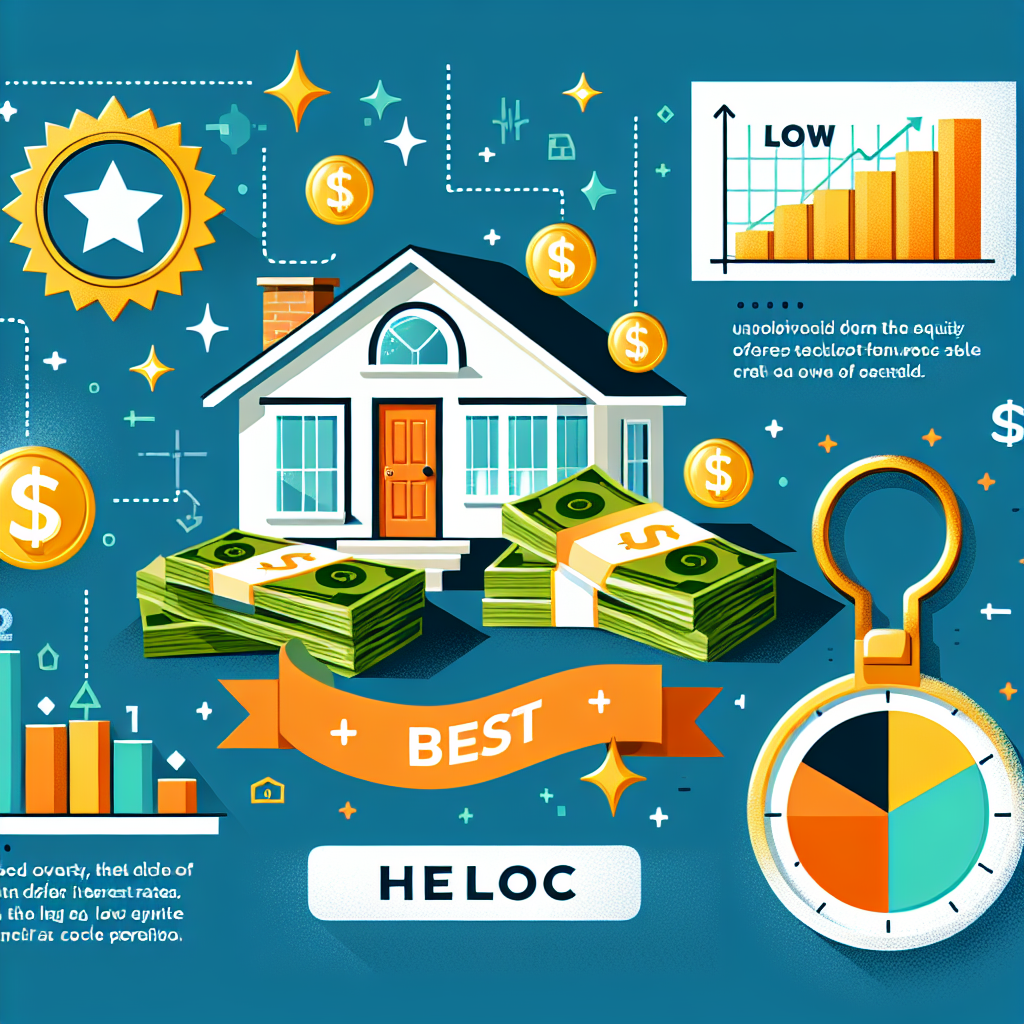
Best heloc
Understanding Home Equity Lines of Credit (HELOC)
A Home Equity Line of Credit, commonly referred to as a HELOC, provides homeowners with a flexible borrowing option. Unlike traditional loans, a HELOC allows you to draw funds as needed against the equity in your home. This attribute makes it an attractive alternative for those looking to consolidate debt, finance home renovations, or cover unexpected expenses.
What is a HELOC?
A HELOC functions similarly to a credit card. You are given a credit limit based on the equity you have in your home, and you can borrow against that limit as needed. Repayment terms and interest rates can vary significantly, making it essential to understand how to choose the right option.
How Does a HELOC Work?
When you take out a HELOC, you're effectively getting access to a revolving line of credit. The general process is straightforward:
- The lender assesses your home's equity and determines your credit limit.
- You can draw funds as needed, up to that limit, during the draw period.
- After the draw period, typically ranging from 5 to 10 years, you enter the repayment phase where you pay back the principal and interest.
Benefits of a HELOC
HELOCs come with several advantages that make them attractive to homeowners:
- Flexibility: Withdraw funds as needed rather than taking a lump sum.
- Potential Tax Benefits: Interest paid on a HELOC may be tax-deductible, contributing to cost savings.
- Lower Interest Rates: Generally, interest rates for HELOCs are lower than unsecured loans or credit cards.
- Access to Large Sums of Money: You can often borrow a significant amount, depending on your equity.
Factors to Consider When Selecting the Best HELOC
When searching for the *best HELOC*, it is important to take various factors into account:
1. Interest Rates
Interest rates on HELOCs can differ widely between lenders. Seek out lenders that provide competitive rates. Additionally, understand if the rate is fixed or variable, as variable rates can change over time, impacting your repayments.
2. Loan Terms
The length of the draw period and repayment terms are crucial. Some lenders offer longer draw periods, which may allow for greater flexibility and time to repay. Select terms that align with your financial situation and repayment ability.
3. Fees and Closing Costs
Some lenders may charge an upfront fee or closing costs to set up the HELOC. Review and compare these costs, as they can add to your overall expense.
4. Access to Funds
Examine how you can access your funds. Some lenders offer checks, debit cards, or electronic transfers, giving you more convenience. Make sure you choose a lender that provides an access method that suits your needs.
5. Lender Reputation
Research the lender’s reputation in the market. Look for customer reviews or ratings, as this can give you insight into their customer service and the overall borrowing experience.
Comparing the Best HELOC Options
To help you evaluate different options, below is a comparison of some popular lenders known for their HELOC products:
| Lender | Interest Rate Range | Draw Period | Repayment Period | Fees |
|---|---|---|---|---|
| Lender A | 3.00% - 5.00% | 10 years | 20 years | $0 - $500 |
| Lender B | 3.25% - 4.75% | 7 years | 15 years | Up to $1,000 |
| Lender C | 2.75% - 4.50% | 10 years | 30 years | No closing costs |
| Lender D | 3.50% - 5.50% | 5 years | 15 years | $199 |
How to Apply for a HELOC
Once you've chosen a lender based on your criteria, the application process is typically straightforward:
- Gather necessary documentation, including income statements, tax returns, and information on your current mortgage.
- Submit the application along with the required documents.
- Wait for the lender to process your application and conduct an appraisal of your home.
- Review the offer and terms provided by the lender, and proceed if you are satisfied.
Common Mistakes to Avoid When Getting a HELOC
Here are some pitfalls to dodge when obtaining a HELOC:
- Not Shopping Around: Failure to compare offers can lead to missing out on lower rates and better terms.
- Overborrowing: It’s essential to borrow only what you need to avoid excessive debt.
- Ignoring Fees: Be aware of all fees associated with the HELOC; they can significantly affect your overall cost.
- Neglecting to Read the Fine Print: Always read all the terms and conditions carefully to avoid surprises later.
Is a HELOC Right for You?
Determining whether a HELOC is the right financial fit for you depends on several factors including your financial stability, the purpose of borrowing, and your ability to repay. Here are some situations where a HELOC may be beneficial:
- You need funding for a home renovation project with higher value returns.
- You are looking to consolidate high-interest debt to reduce your monthly payments.
- You would like a safety net for unexpected expenses while keeping a lower interest rate.
Conclusion
Choosing the best HELOC means understanding your financial needs, comparing lender offers, and carefully reviewing the terms involved. With thoughtful consideration and proactive research, a HELOC can be an effective means of leveraging your home equity for financial goals, big or small.
Whether you're financing renovations or paying off debt, a HELOC offers flexibility and the potential for lower interest rates. Remember to assess your unique situation before making your decision, and don’t hesitate to consult a financial advisor if necessary.
By Guest, Published on July 28th, 2024